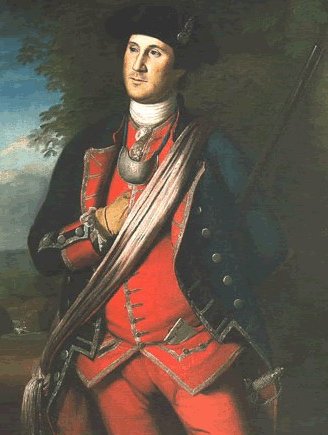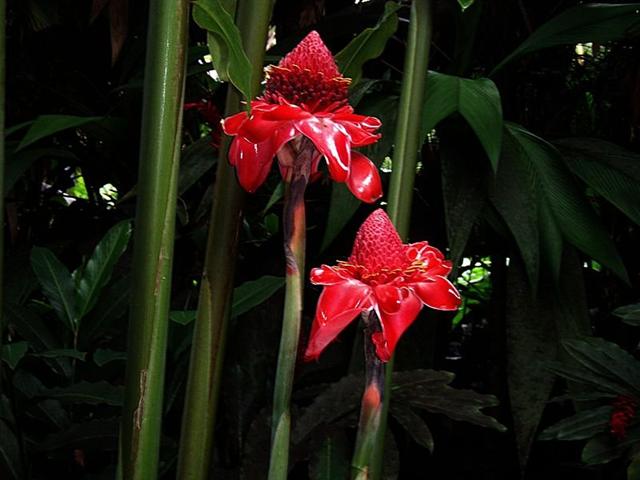It is now time to begin to
discuss the elusive Rei type of
glyph:
|
Alrescha 1 |
2 |
3 |
4
(354) |
|
May 2 |
3 |
4 |
5 (125) |
 |
 |
 |
 |
|
Ca2-16 |
Ca2-17 |
Ca2-18 |
Ca2-19 (45) |
|
erua
tamaiti |
ki
te huaga o te hoi hatu |
e
tagata poo pouo |
| |
|
Menkar
(44.7) |
|
Alrescha
5 |
6 |
7 |
8 |
|
May 6 |
7 (492) |
8 (128) |
9 |
 |
 |
 |
 |
|
Ca2-20 |
Ca2-21 |
Ca2-22
(48) |
Ca2-23 |
| te vai |
e tino noho toona |
te Rei
- pa hia mai |
kiore i te
henua |
|
3h
(45.7) |
|
|
|
|
Rei
1. To tread,
to trample on: rei kiraro
ki te va'e. 2. (Used
figuratively) away with you!
ka-rei kiraro koe, e
mageo ê, go away, you
disgusting man. 3. To shed
tears: he rei i te mata
vai. 4. Crescent-shaped
breast ornament, necklace;
reimiro, wooden,
crescent-shaped breast
ornament; rei matapuku,
necklace made of coral
or of mother-of-pearl;
rei pipipipi, necklace
made of shells; rei
pureva, necklace made of
stones. 5. Clavicle.
Îka
reirei,
vanquished
enemy, who is kicked (rei).
Vanaga.
T. 1.
Neck. 2. Figure-head.
Rei mua =
Figure-head in the bow.
Rei muri =
Figure-head in the stern.
Henry.
Mother of
pearl;
rei kauaha, fin.
Mgv.:
rei, whale's
tooth. Mq.:
éi, id. This is
probably associable with the
general Polynesian
rei, which means
the tooth of the cachalot,
an object held in such
esteem that in Viti one
tooth (tambua)
was the ransom of a man's
life, the ransom of a soul
on the spirit path that led
through the perils of Na
Kauvandra to the last abode
in Mbulotu. The word is
undoubtedly descriptive,
generic as to some character
which Polynesian perception
sees shared by whale ivory
and nacre.
Rei kauaha is not
this
rei; in the Maori
whakarei
designates the carved work
at bow and stern of the
canoe and Tahiti has the
same use but without
particularizing the carving:
assuming a sense descriptive
of something which projects
in a relatively thin and
flat form from the main
body, and this describes
these canoe ornaments, it
will be seen that it might
be applied to the fins of
fishes, which in these
waters are frequently
ornamental in hue and shape.
The latter sense is confined
to the Tongafiti migration.
Reirei,
to trample down, to knead,
to pound. Churchill.
Pau.:
Rei-hopehopega, nape.
Churchill.
Mg.
Reiga, Spirit
leaping-place. Oral
Traditions. |
A rei miro
(wooden pendant) should hang
around the neck (rei) of its
owner as a
sign of who is chief ('officer
on duty').
"Throughout
Polynesia, the word rei
signifies a neck ornament of
some kind, perhaps
internationally best known as
Hawaii's lei ('flower
necklace'). Easter Island's
rei miro ('wooden rei')
are without parallel in
Polynesia. However, they display
a form that is strikingly
similar to the silver crescent
gorget worn by Cook's Marine
Officer Gibson who accompanied
Cook on all three voyages,
including the one to Rapa Nui
in 1774. Such silver crescent
gorgets was prescribed dress for
a Marine Officer of the British
Royal Navy in the second half of
the eighteenth century. Rapa
Nui's rei miro were attested
only after 1774." (Fischer)
This is how silver gorgets look like:
"... A
gorget
originally
was a
steel
collar
designed
to
protect
the
throat.
It was a
feature
of older
types of
armour
and
intended
to
protect
against
swords
and
other
non-projectile
weapons.
Later,
particularly
from the
18th
century
onwards,
the
gorget
became
primarily
ornamental,
serving
only as
a
symbolic
accessory
on
military
uniforms.
Most
Medieval
versions
of
gorgets
were
simple
neck
protectors
that
were
worn
under
the
breastplate
and
backplate
set.
These
neck
plates
supported
the
weight
of the
armour
worn
over it,
and many
were
equipped
with
straps
for
attaching
the
heavier
armour
plates.
Later,
Renaissance
gorgets
were not
worn
with a
breastplate
but
instead
were
worn
over the
clothing.
Most
gorgets
of this
period
were
beautifully
etched,
gilt,
engraved,
chased,
embossed,
or
enamelled
and
probably
very
expensive.
Gorgets
were the
last
form of
armour
worn on
the
battlefield.
During
the 18th
and
early
19th
centuries,
crescent-shaped
gorgets
of
silver
or
silver
gilt
were
worn by
officers
in most
European
armies,
both as
a badge
of rank
and an
indication
that
they
were on
duty.
These
last
survivals
of
armour
were
much
smaller
(usually
about
three to
four
inches
in
width)
than
their
Medieval
predecessors
and were
suspended
by
chains
or
ribbons.
In the
British
service
they
carried
the
Royal
coat of
arms
until
1796 and
thereafter
the
Royal
cypher.

Colonel
George
Washington
wore a
gorget
as part
of his
uniform
in the
French
and
Indian
War,
which
symbolized
his
commission
as an
officer
in the
Virginia
Regiment.
Gorgets
ceased
to be
worn by
British
army
officers
in 1830,
and by
their
French
counterparts
20 years
later
..."
(Wikipedia)
|
But these gorgets
cannot explain the rei miro
wooden 'silvery fishes' altogether,
because the idea was there already,
as we can see from Tiahuanaco, where
the central person wears a fish on
his honourable chest:

I think this cup-formed fish represents the winter season, when Moon
(a woman often thought of as a fish) was ruling, when Sun
was on the other side of the equator, when the manu rere
spirit of Sun was not present, and when the migrating birds were
far away. Instead of the season of 'birds' (= high up and
high sky) it was the season of 'fishes' (= far
down and low sky). Our rule of double negatives can be
used to ascertain the probable meaning of re.
It should be the opposite of rere (moving quickly and
full of life energy). My suggestion can be tried when
searching for the meaning of the 'sprit leaping' places, rei-ga. These
places are for people whose life energies have been completely exhausted.
They need
to be 'refueled' high up in the sky, where warmth and life
is originating. My reasoning leads to
the conclusion that the first part in the word Re-i could refer to a
position close to the horizon, in the southwest (toga)
or below the horizon in the east.
Some support for my suggestion of the meaning of
re is given by re-ga (the place, -ga, of re),
because rega (ginger) was the Easter Island variant of
the kava root:
|
Rega
Ancient word,
apparently meaning 'pretty,
beautiful'. It seems to have
been used also to mean 'girl'
judging from the nicknames given
young women: rega hopu-hopu.
girl fond of bathing;
rega maruaki, hungry girl;
rega úraúra,
crimson-faced girl. Vanaga.
Pau.: rega,
ginger. Mgv.: rega,
turmeric. Ta.: rea, id.
Mq.: ena, id. Sa.:
lega, id. Ma.: renga,
pollen of bulrushes. Churchill. |
| "The impact of
lightning and thunder -
as if there was a pair of gods 'talking' to our eyes
and ears - apparently makes nature wake up. A change
of state mostly follows with fresh air and sun
returning. The kava
glyph type is designed as a zigzag pattern, much
like that written in lightning on the dark stormy
sky. Lightning and thunder work magic together
creating sunligth and rain. Sunlight and rain are
related ...
One of the effects of kava
drinking is to enhance the sensitivity of the eyes -
light appears to be growing ..." (From my
preliminary glyph type dictionary.) |

The
place of beauty (rega) should be early in spring, when
winter is subdued:
|
Re
Pau.: victory.
Ta.: re,
prize in any contest, prey. Mgv.:
Re-mai,
to emerge from prison, to recover from illness,
delivered from evil. Mq.:
ee,
to go, to escape. Sa.: lele,
to go out (of the passing soul). Ha.:
lele,
to depart (of the spirit). Churchill. |
When in
spring Sun returns (hoki) with vai ('sweet
water') to the cultivated fields (hatu) the result is
growth - new food, best illustrated as a hand eating (kai). This
hand is the opposite of the Mayan Chikin (grasping) hand.
When the Sun king (the 'trunk', te tino, of the
community) is present
the land where
he resides (noho) will become fertile again. I will
here take the opportunity to define a new type of glyph,
perhaps close to
but opposite in meaning to raaraa (marae,
'no Sun'):
 |
 |
|
tino |
raaraa |
... The people
(mahingo) listened as he spoke. The king called out
to his guardian spirits (akuaku), Kuihi and
Kuaha, in a loud voice: 'Let the voice of the rooster of
Ariana crow softly. The stem with many roots (i.e.,
the king) is entering!' The king fell down, and Hotu A
Matua died. Then all the people began to lament with
loud voices. The royal child, Tuu Maheke, picked up
the litter and lifted (the dead) unto it. Tuu Maheke
put his hand to the right side of the litter, and together
the four children of Matua picked up the litter and
carried it ...
... What I saw
stunned me, for in her hand lay a perfect replica of the
earflares worn by the Classic Maya kings. Suddenly I
understood the full symbolism of so many of the things I had
been studying for years. The kings dressed themselves as the
Wakah-Chan tree, although at the time I didn't know
it was also the Milky Way.
The tzuk [partition] head on the trunk of the tree
covered their loins. The branches with their white flowers
bent down along their thighs, the double-headed ecliptic
snake rested in their arms, and the great bird Itzam-Yeh
stood on their head. I already knew as I stood under the
young tree in Tikal that the kings were the human embodiment
of the ceiba as the central axis of the world. As I stood
there gazing at the flowers in Joyce's hand, I also learned
that the kings embodied the ceiba at the moment it flowers
to yield the sak-nik-nal, the 'white flowers', that
are the souls of human beings. As the trees flowers to
reproduce itself, so the kings flowered to reproduce the
world ...
|





